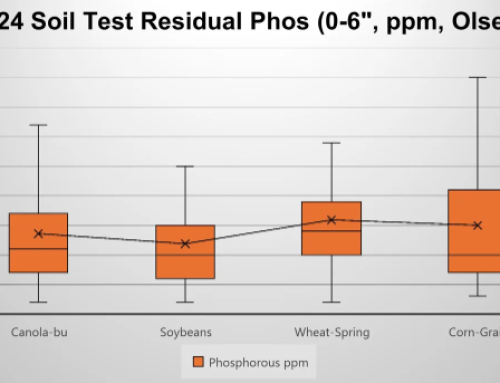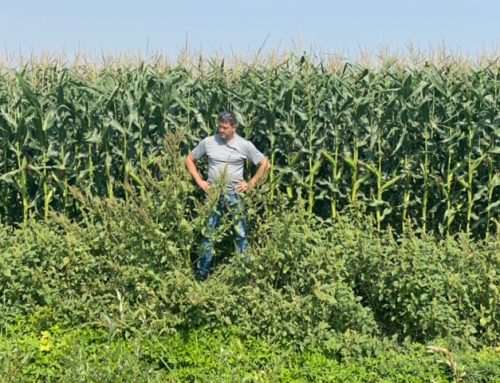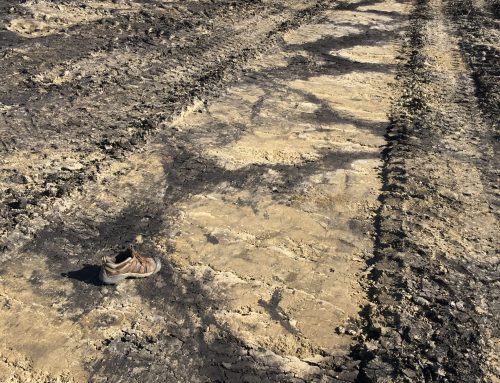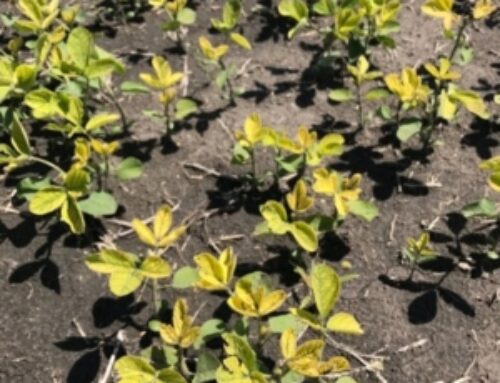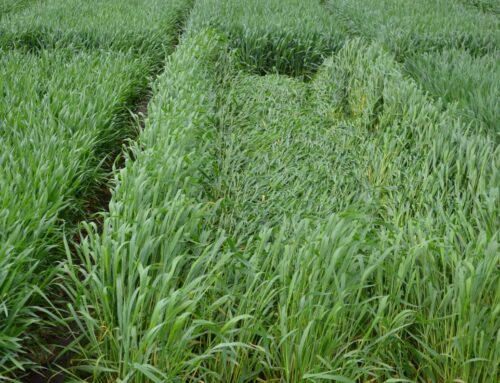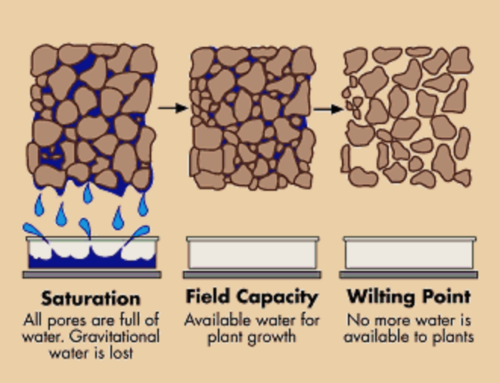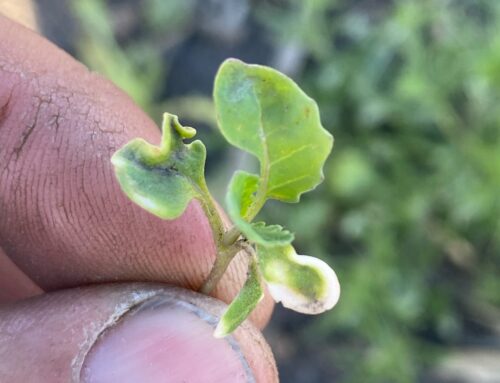I was out checking the nodulation on a few soybean fields this week and I hadn’t fully realized just how dry it was out there. It was hard enough that I needed all of my 220lb frame to push the spade into the ground. Eventually I bent my spade, but it got me thinking about soil available moisture for next year.
Soil available moisture is not something we normally think about in the Red River Valley because we usually have too much. Evidently our clay soils can hold a lot of water because I am guessing there are not too many soils that can grow 80+bu wheat on 2″ of growing season rainfall.
When describing soil moisture, there are a few terms relating to plant growth borrowed from the Manitoba Agriculture Website:
- Saturation is the moisture content at which all soil pores are completely water-filled.
- Field capacity (FC) is the maximum amount of water held in a soil, measured a few days after it has been thoroughly soaked and allowed to drain freely. (Note: FC is difficult to determine for heavy clay soils because water drains so slowly through these soils.)
- Permanent wilting point (PWP) is the soil water content at which water is no longer available to plants, which causes them to wilt because they cannot extract enough water to meet their requirements.
- Available water (AW) is the amount of water held in a soil that plants can use. The maximum amount of available water held in a soil is the difference between the PWP and FC, expressed in inches or millimetres of water per unit depth of soil.
- Air Dry is the amount of water remaining in soil after drying at room temperature for several hours. Only water that is tightly held to the soil particles (hygroscopic water) remains.
A general rule of thumb is that it takes about 18″ of available moisture to grow 70 bu of wheat. At field capacity, 12″ of clay will hold roughly 2.5″ of available water. 4ft of clay should therefore hold roughly 10″ of available water. Many areas only received 2-3″ of rain since spring which would leave us with a 5-6″ deficit. After all the rain last year we would probably describe conditions as saturated rather than at field capacity.
What are the current levels of available moisture?
The following chart (also borrowed from MB Agriculture) shows how to estimate available moisture by feel. Here are a few soil cores pulled form a field this season:
The top is summer fallow that still has decent moisture reserves. Most depths will form a ball under pressure and ribbon out, placing the available moisture at 50-70%.
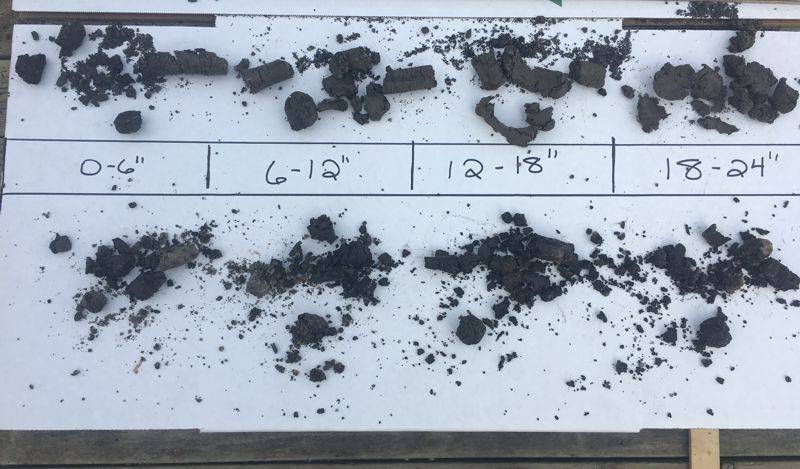
The bottom is a core from a canola field across the road. Most of the depths can barely form a ball under pressure, putting us well below 50% available moisture.
Table 3.2 Determining available soil moisture by feel or appearance |
||||
% Available water remaining |
Coarse (VCoS – LFS) |
Light (VFS – FSL) |
Medium (L – SiCL) |
Heavy (SC – HC) |
0 (PWP or drier) |
Dry, loose, single grained, flows through fingers |
Dry, loose, flows through fingers |
Powdery, dry, sometimes slightly crusted but easily breaks down into powdery condition |
Hard, baked, cracked, sometimes has loose crumbs on surface |
< 50 |
Still appears to be dry; will not form a ball with pressure |
Sill appears to be dry; will not form a ball |
Somewhat crumbly but will hold together from pressure |
Somewhat pliable, will ball under pressure |
50-75 |
Still appears to be dry; will not form a ball with pressure |
Tends to ball under pressure but seldom will hold together |
Forms a ball, somewhat plastic, will sometimes slick slightly with pressure |
Forms a ball, will ribbon out between thumb and forefinger |
75 to FC |
Tends to stick together slightly, sometimes forms a very weak ball under pressure |
Forms weak ball, breaks easily, will not slick |
Forms a ball and is very pliable, slicks readily if relatively high in clay |
Easily ribbons out between fingers; has a slick feeling |
At FC |
Upon squeezing, no free water appears on soil but wet outline of ball is left on hand |
Upon squeezing, no free water appears on soil but wet outline of ball is left on hand |
Upon squeezing, no free water appears on soil but wet outline of ball is left on hand |
Upon squeezing, no free water appears on soil but wet outline of ball is left on hand |
Above FC |
Free water appears when soil is bounced in hand |
Free water will be released with kneading |
Can squeeze out free water |
Puddles and free water forms on surface |
What’s in store for next year?
We will need significant rainfall this fall or over the course of the next growing season to replenish available moisture. If we go into next season with less than 50% available water, we might need anywhere from 10-15 inches of rainfall, assuming none of it runs off the field. We will have to assess available moisture levels after snow melt to determine yield potentials based on probability of rain.

